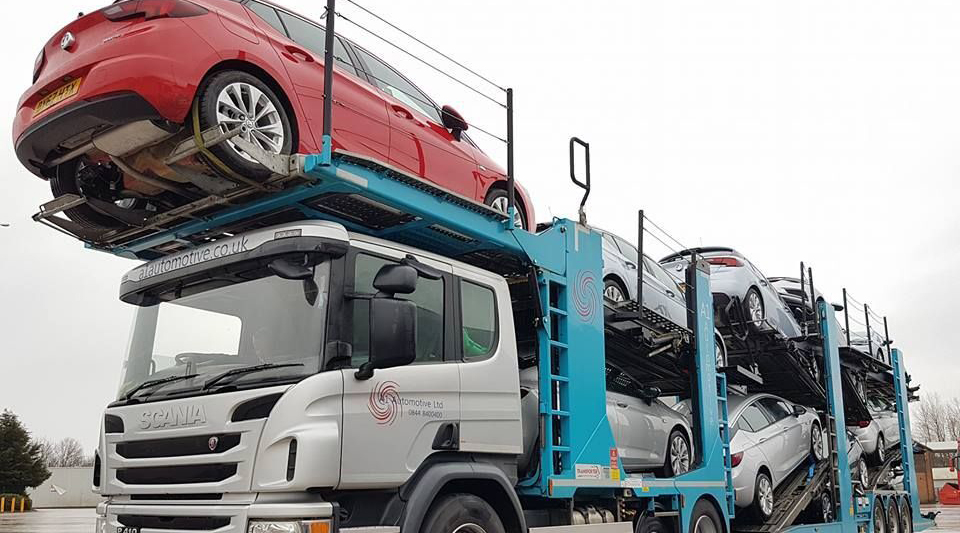- Toll Free: (877) 580-1808
- Local: (407) 707-6288
- dispatch@ghostpepperlogistics.com

Shipping a car across the country has never been an easy task, especially when you’re doing it for the first time. However, in order to guarantee that you ship a car and that it gets to its destination safely, this article describes some of the important factors to consider and actions to take.
There are 10 preliminary tasks you must complete before shipping your car. Not one of them should be skipped. Here are some key ultimate guides on what you need to do:
Gather all the paperwork pertaining to your vehicle first. Without the documents, the car may not arrive or leave. Carriers want to make sure that the vehicle is indeed yours and that it hasn’t been stolen. In addition to your identity, which could be a driver’s license or passport, you will need your original registration papers, evidence of insurance, a bill of sale, and the original title.
In order to avoid any form of delay, don’t forget to plan all the procedures in advance. To lower storage costs, you must also have adequate funds on hand to cover import taxes and duties. Furthermore, without the official and complete permission of the lending bank, vehicles may not be relocated outside the country in which they were funded.
Washing the car thoroughly is the next stage. Both the inside and the outside are included. This enables you to inspect the car for damage before it is transported. It is simple to settle disagreements about damage by properly cleaning the vehicle, taking detailed photos of it, and identifying any dings, scratches, or dents. Your vehicle will arrive at its new location clean if you ship it professionally.
The courier will demand that you report any damage. A thorough examination and snapshot of the vehicle, indicating any damage, are advised. Hopefully, there won’t be any mud or dust. You can, however, report paint flakes and stains. The vehicle is unlikely to sustain any damage during transit thanks to the massive improvement in shipping standards. However, it is advisable to always make sure that you are aware of the precise state of the vehicle you are exporting.
Don’t forget to take all your personal items out of the car. They may go missing, in which case the carrier is not liable. Remove all your personal items while cleaning. Never store boxes or other objects in the trunk of your car in the hopes that you might transport them for free. You won’t have any recourse if these things are lost because they are not insured against any form of damage or theft. In fact, relocating objects in the vehicle may result in a penalty for the carrier. Consider this before importing a vehicle.
Never leave any of your personal or identifying information, such as insurance details, in the vehicle. You must also take off your toll and parking badges.
Keep in mind that if you leave the toll tag on your car, you will be charged if the car passes through tolls. In case of issues, it is important to leave a spare tire, a jack, license plates, and emergency supplies.
Before transporting a vehicle, all required maintenance must be completed. To make it easier for the vehicle to board and exit the truck, this is done. If not, you could have to shell out more money for cranes and forklifts. Check for leaks and mechanical issues. Check the tire pressure to ensure it is not too high or too low. The battery has to be well charged. Coolants, washer fluid, brake fluid, and power steering fluid should all be topped out. Record the miles so you may check for errors at the end of the journey.
Because there won’t be any form of driving, empty the tank of petrol. For movement in and out of the truck, you can spare some petrol. By filling up the tank before changing, you only add weight to your vehicle and spend money that is not necessary. For most cars, a quarter tank is sufficient.
Before shipping, the car must be stripped of any exterior accessories. During transportation, these items may harm the vehicle. Additionally, the attachments might be broken and costly. Racks, crates, antennae, and custom spoilers are a few of the things we often remove.
For security reasons, lock the vehicle using a key. To relocate the vehicle, you must, however, leave the keys, or a duplicate of the keys, with the carrier. Adding protection by locking the car door will benefit you if you ever need to make a theft claim. To maintain control over the vehicle, simply pass over a spare key. These keys may suddenly get lost while being transported.
Create a bill of lading and submit it to begin the procedure. The driver will contact you to confirm that the car is prepared for delivery before shipment. The car sometimes has to be driven to the pickup location. An authorized representative is required to examine the vehicle and sign all paperwork, including the one outlining the vehicle’s condition. The origin and destination of the car will be shown on the bill of lading. Additionally, it will draw attention to any unique or technical concerns for future reference.
Hiring a reputable car shipping company and giving them the labor-intensive chores to do is the simplest method to ship a car across the country. Find the best company for your requirements and price range by requesting at least three quotations and comparing shipping costs and product offers from various service providers.
In the vehicle transport sector, there are several outstanding auto shippers. Always confirm that the car shipping company you intend to work with meets the below criteria: